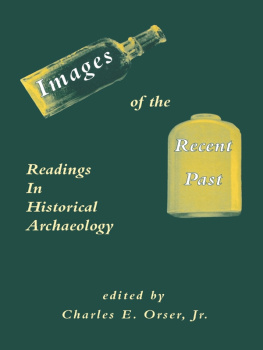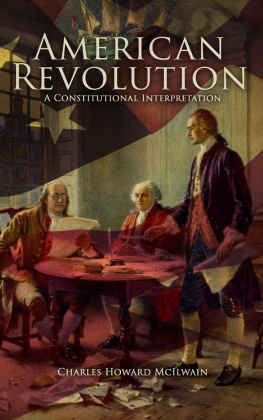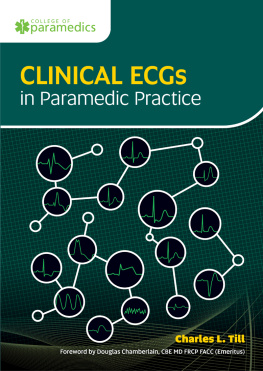Copyright 2004 University of Pennsylvania Press
All rights reserved
Printed in the United States of America on acid-free paper
10 9 8 7 6 5 4 3 2 1
Published by
University of Pennsylvania Press
Philadelphia, Pennsylvania 191044011
Library of Congress Cataloging-in-Publication Data
Orser, Charles E.
Race and practice in archaeological interpretation / Charles E. Orser, Jr.
p. cm. (Archaeology, culture, and society)
ISBN 0-8122-3750-1 (cloth : alk. paper)
Includes bibliographical references and index.
1. ArchaeologyPhilosophy. 2. RaceHistory. 3. Ethnoarchaeology.
I. Title. II. Series
CC72 .077 2004
930.10285dc21
2003053743
Preface
Scholars who investigate racea label that asserts the identification of individuals based upon real or perceived physical differencesrealize that they face a formidable task. History records that learned academicians, committed political activists, well-intentioned relief workers, empowered citizens, and disfranchised outcasts have variously contested and condoned, debated and denied race throughout modern history. That a complete and thoroughly accepted understanding of race has not emerged with the start of the twenty-first century merely demonstrates the tenacity of the concept, the perseverance of those who would seek to construct their world around racial notions, and the concomitant investigative hurdles that must be negotiated in the analysis of race.
Part of the difficulty of reaching a wholly satisfactory notion of race stems from the historical reality of racializationthe conscious labeling of individuals and groups as members of a race based upon specific criteria. Racialization is a process that seeks to define and compartmentalize the human community on the basis of outward characteristics. Individuals intent on racializing others have felt justified in using physical appearance, cultural practice, religious belief, and many other attributes as their defining variables. The process of racialization is never entirely harmless or disengaged from social ranking, because one implication of the process is the construction of social inequality. An added historicity of racialization is that the classifiers are completely free to change their classificatory attributes at any time. The mutability of the process mandates that the study of racialization is immensely laborious and fraught with pitfalls.
A contributing factor in the historical chimera of race is that racialized men and women may decide to accept an imposed label as a symbol of unity, group consciousness, and empowerment. Thus, while race does not exist as a biological reality, and racialization is a vastly mutable process, the assignment of race is a social fact with concrete reality in the daily lives of countless individuals.
Anthropologists, sociologists, and others who investigate race and racialization in present-day communities fully appreciate the obstacles that such study presents. The very mutability of the concepts, both across space and through time, dictates the complexity of race among living peoples. Knowing this, we can fully appreciate that the examination of race in the past is even more problematic. The addition of archaeological data to the universe of available information merely intensifies the problems because of the notorious difficulty of social interpretation in archaeology. To be sure, the many detailed ethnographic accounts of race and racialization serve as substantive cautionary tales for archaeologists.
This book is presented with the full understanding that race and racialization are profoundly complicated concepts that have had, and still have, clear social practices associated with them. The project to understand the archaeological dimensions of race and racialization in the modern world is only just beginning, and archaeologists will undoubtedly sustain the analytical effort for many years. This book is presented to offer one way to engage the examination of historic race.
In an important way, this book is a continuation and substantive refinement of A Historical Archaeology of the Modern World (1996). In that exploration, I outlined ideas about the importance of an archaeology of the modern world in light of the notion that because archaeology exists in the present, its practitioners have a responsibility to address research questions that have both historical and present-day significance. The onus of relevance is particularly strong on historical archaeologists because the history they study is still being enacted in various ways throughout the world.
The primary concern of the earlier book was to explore the major themes of the modern world and to consider how archaeologists might contribute to understanding their historical trajectories. These themescolonialism, Eurocentrism, capitalism, and modernityforever hover around the practice of historical archaeology. That these four topics can be controversial in todays scholarship amply demonstrates the continued force they exert on modern life.
Many readers misread the use of the term haunts to describe the major themes of the modern world as an attempt to promote a totalizing scheme for world history or to propose an Eurocentric view of modern history. Nothing could have been further from the objective because the goal was to demonstrate that capitalism, colonialism, Eurocentrism, and modernity have had, and continue to have, significant and locally variable impacts on the peoples of the world.
The initial attempt at framing a modern-world archaeology, however, was not without problems. In concentrating so deeply on the overarching, broad themes, many topics of seminal, social significance were glossed over or ignored. Race and racialization were a most glaring omission.
When thinking about an archaeology of race and the process of racialization, the works of two French scholars, Pierre Bourdieu and Henri Lefebvre, have been most helpful, even though neither of them engaged race in any substantive way. Neither was trained in archaeology, nor did either ever write about archaeological interpretation. Their lack of familiarity with archaeological practice, however, does not mean that their perspectives and insights have no utility in archaeology. On the contrary, their works are immensely important to helping frame a way of explicating an archaeology of race.
The application of race praxeology to early nineteenth-century rural Ireland may strike some readers as unusual. A strong case can be built for an explicit archaeology of race by reference to African American history. Not only have archaeologists provided a wealth of new information about the daily lives of slaves throughout North America, South America, and the Caribbean, but issues of race have tenaciously held a central place in American history. All residents of the United States have engaged race and racialization in one form or other. Even so, a case study focused on Ireland provides two important advantages. First, it presents materials from a region that has yet to receive sustained archaeological attention. Nine years of archaeological fieldwork in northern County Roscommon in the Republic of Ireland, at three pre-famine (18001850) evicted villages but concentrated at one, Ballykilcline, have demonstrated the wealth of information this research arena offers. The abundance of textual sources and the richness of the archaeological data combine to provide a well-developed sociohistorical context for the period. Second, a focus on early nineteenth-century Ireland offers an occasion to investigate race and racialization among a people who are today viewed as white, but who were not always so viewed in the past. Several authors from diverse disciplines have examined Irish racialization and whiteness, and many of them have provided explicit details about the historical strain of thought that linked rural Irish men and women with African Americans. A consideration of Irish racialization also has the power to link the sociohistorical situation in Ireland with similar situations in those places where Irish emigrants settled. The racial element of Irishness is thus clear, even though its full understanding is only now emerging.






